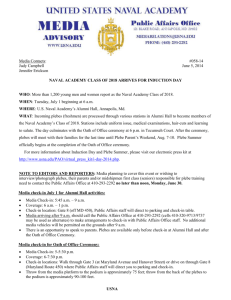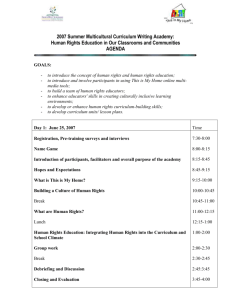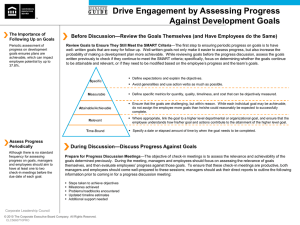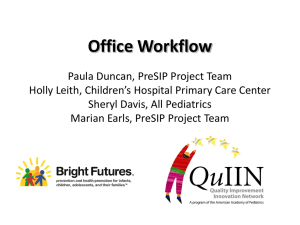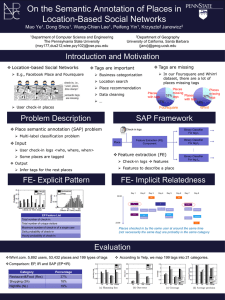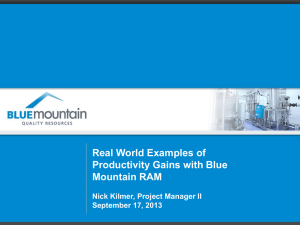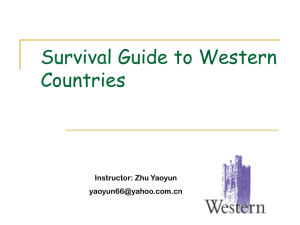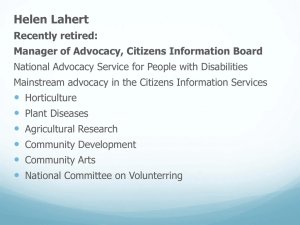Session 1E - Helping Students with Disabilities
advertisement
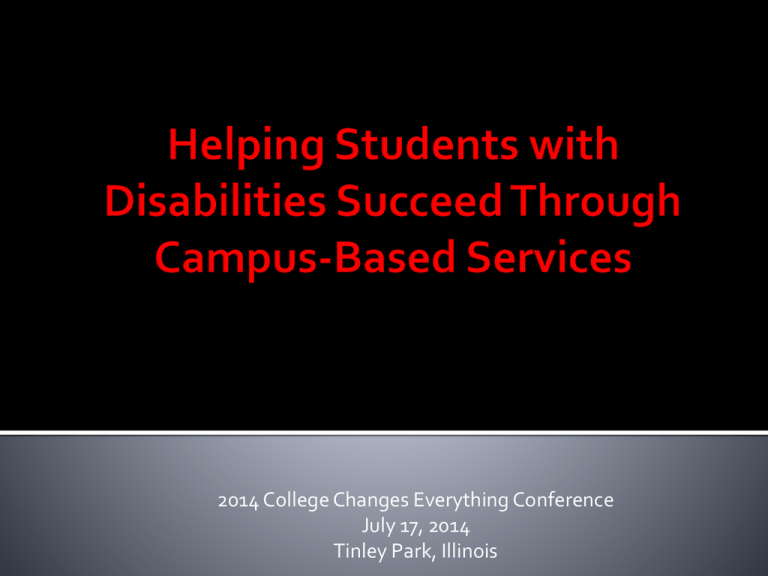
2014 College Changes Everything Conference July 17, 2014 Tinley Park, Illinois Denise Ross & Alexandra Novakovic DePaul University Kimberly Hopson Youth Connection Charter Schools Daniel Micallef Instituto del Prado Health Sciences Career Academy Only 15% of students with disabilities attend college after high school Often cite the absence of campus supports as a reason for not enrolling CSFAD was an activity-based strategy to make college more accessible for students with disabilities 20 high school students with disabilities shadowed undergraduate students as part of a “scavenger-hunt” Participants and their mentors navigated academic and social support offices on the university campus Students participated in college readiness lessons Students visited campus offices (the writing center, bookstore, financial aid, cafeteria, student center) Students met with Financial Aid and the Center for Students with Disabilities Students received The Pact (Davis, Jenkins, Hunt & Page, 2003) book and movie 10 students from each school Students with high incidence disabilities Ranged in age from 14 to 20 Freshmen through Seniors Teachers selected participants who they thought needed a positive experience related to college Recruited mentors from teacher education classes and DePaul student groups 12 undergraduate students and one postgraduate student participated Received one hour of mentor training and preparation College students participated by planning event, donating time and resources, contacting offices, and forming relationships with high school students 9:00 – 9:30: Breakfast and Introductions 9:30-10:15: Session 1: College Student for a Day overview and career development lessons 10:15 -10:30: Break and transition to small groups 10:30-11:15: Session 2: Small group problem-solving activities using Internet 11:15-11:30: Scavenger hunt directions 11:30-1:30: Scavenger hunt and lunch 1:30-3:00: Session 3: Closing session with campus office representatives Graduate students and faculty from School Counseling Program conducted a follow-up career development activity at the high school sites. High school students read The Pact and watched the movie. College Students Mentoring happened naturally Mentors formed bonds and requested that they remain with specific high school students Mentors stated that they “felt as if they had done something good” Racial and cultural diversity in student group was important experience for future teachers and counselors Next Steps School counseling graduate students could provide the mentor training High School Students Most students expressed a strong interest in attending college on post event survey Students were concerned about financial resources Mentoring was the most highly rated activity Next Steps Start earlier in the school year Consider inclement weather conditions Ongoing activities that include long-term mentoring Moraine Valley Community College Center for Disability Services Debbie Sievers- Director Rebecca Ramirez-Malagon- Educational Case Manager In alignment with Moraine Valley Community College and the Center for Disability Services (CDS), the “Check In for Success” program mission is to: serve students with documented disabilities, to ensure equal access for students, and to promote student independence, success, and self-advocacy. The Check In for Success program is offered to all eligible Center for Disability Services (CDS) students. The program will be introduced to new students at orientation, or through a mass mailing that will be sent to all registered CDS students, and is highly recommended for students on SOAP restriction. First Check-In: The CDS staff will initiate an “Academic Goal and Planning Intake” with each student. At this initial intake students will become familiar with the purpose and goals of the Check-In for Success program. Second Check-In: Create 3 goals/outcomes with the students for the semester and how they plan to obtain them Self advocacy Grades/GPA they would like to achieve Set aside exact time/days to study Turn in all assignments on time Keep a record of grades Student Portal SMART goals are: Specific Measurable Attainable Realistic Time Sensitive Participants will acquire skills and understanding necessary to take a more responsible role in their own education and academic success Participants will learn how to set attainable personal, academic, and career goals following “SMART” method Participants will learn to use tools and resources provided by the college in order to be academically successful (i.e. use of MVConnect, Blackboard, Tutoring) Create focus group that would meet at the end of each semester to discuss how helpful participants found “Check-In for Success” program Create survey with rating system (1-10) that measures the effectiveness of the weekly “Check-In for Success” At the end of the semester, each participating student was asked to complete an evaluation. The evaluation was used to assess how helpful the “Check-In for Success” program had been for students. Activity Objective (s) 1. Participants in pilot will be retained at a rate of at least 59%, eight percentage points higher than 51% in baseline year 2006-07. 2. At least 80% of students in pilot will have records of 1) advisor contact, 2) referrals between advisors and faculty, and 3) a record of a student success plan in the tracking system. 3. The effectiveness of the pilot will be measured by tracking students’ successful course completion rates compared to those who opted out of the pilot program Evidence Thirty-two students signed up for the pilot in fall 2013 semester. Twenty-three students completed the program while nine opted out. Of the 23 students who completed the check-in for success pilot program, 87% were retained from fall to spring 2014 Of the 23 students participating in the program, 100% have records of advisor contact. Students participated in an average of six check-in visits, which included discussions of grades, study skills, time management and referrals to other support resources, such as tutoring. 70 percent of the participants completed at least 60 percent of the credits attempted compared to 56 percent of the participants who opted out of the program. 80% 60% 56% 70% 70% 50% 60% 44% 56% 40% 50% 40% Participants Participants 30% Non-participants Non-participants 30% 20% 20% 10% 10% 0% 0% Successful Course Completion Rates Retention Rates
